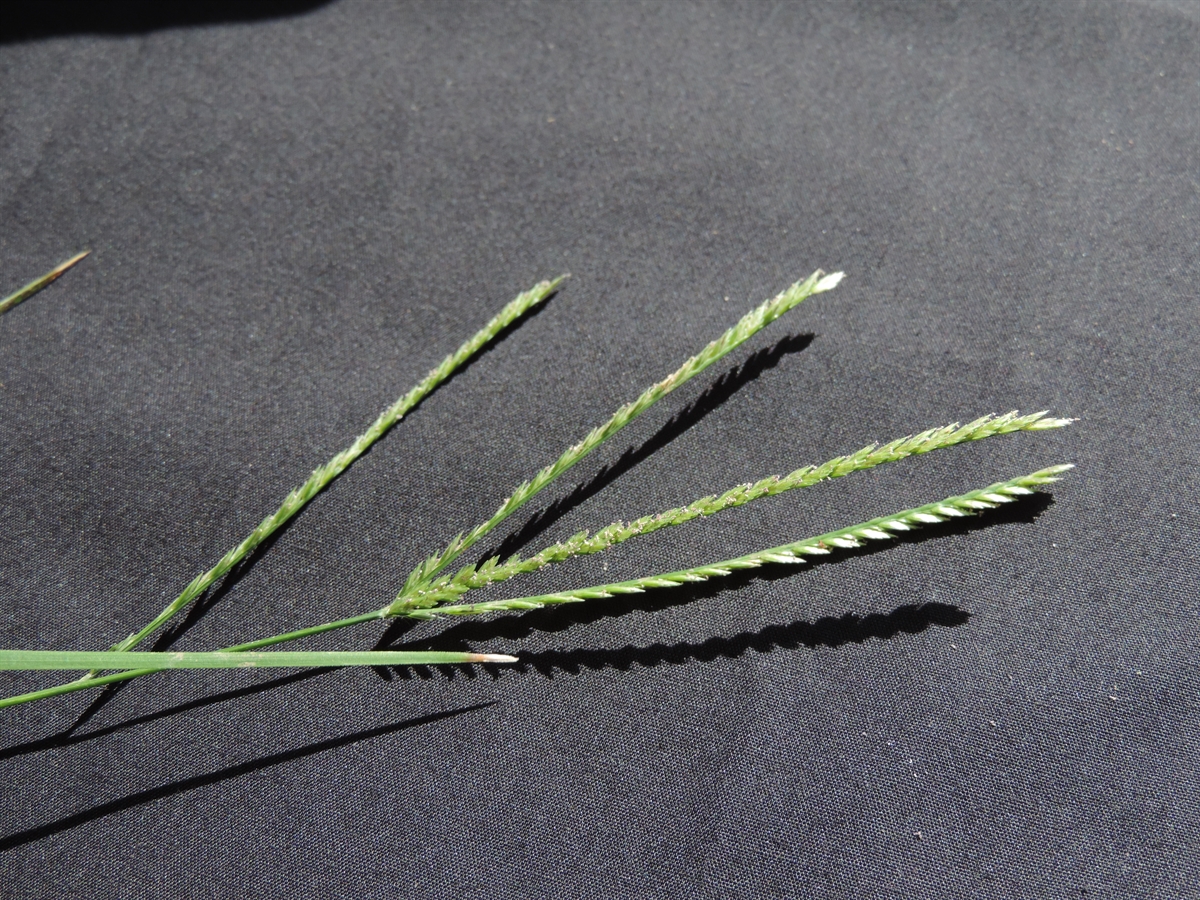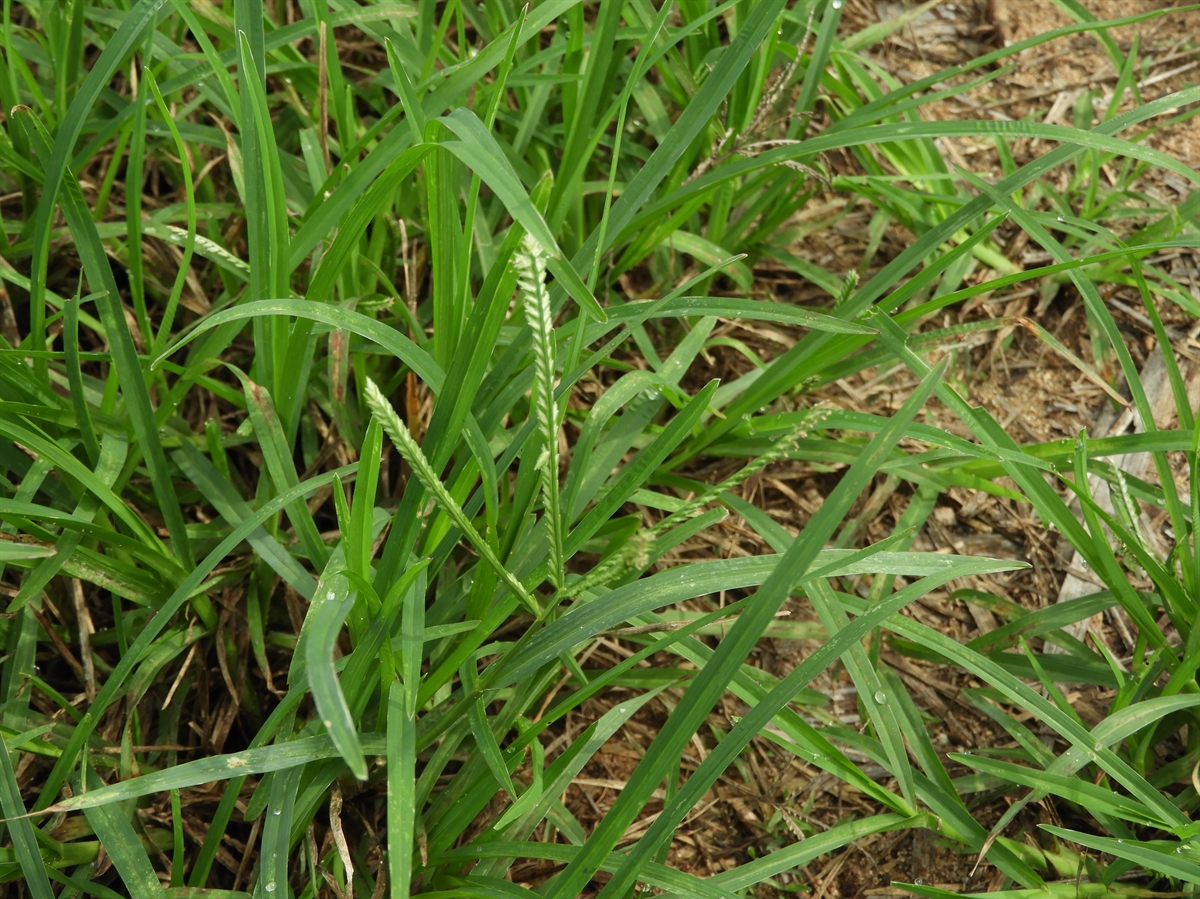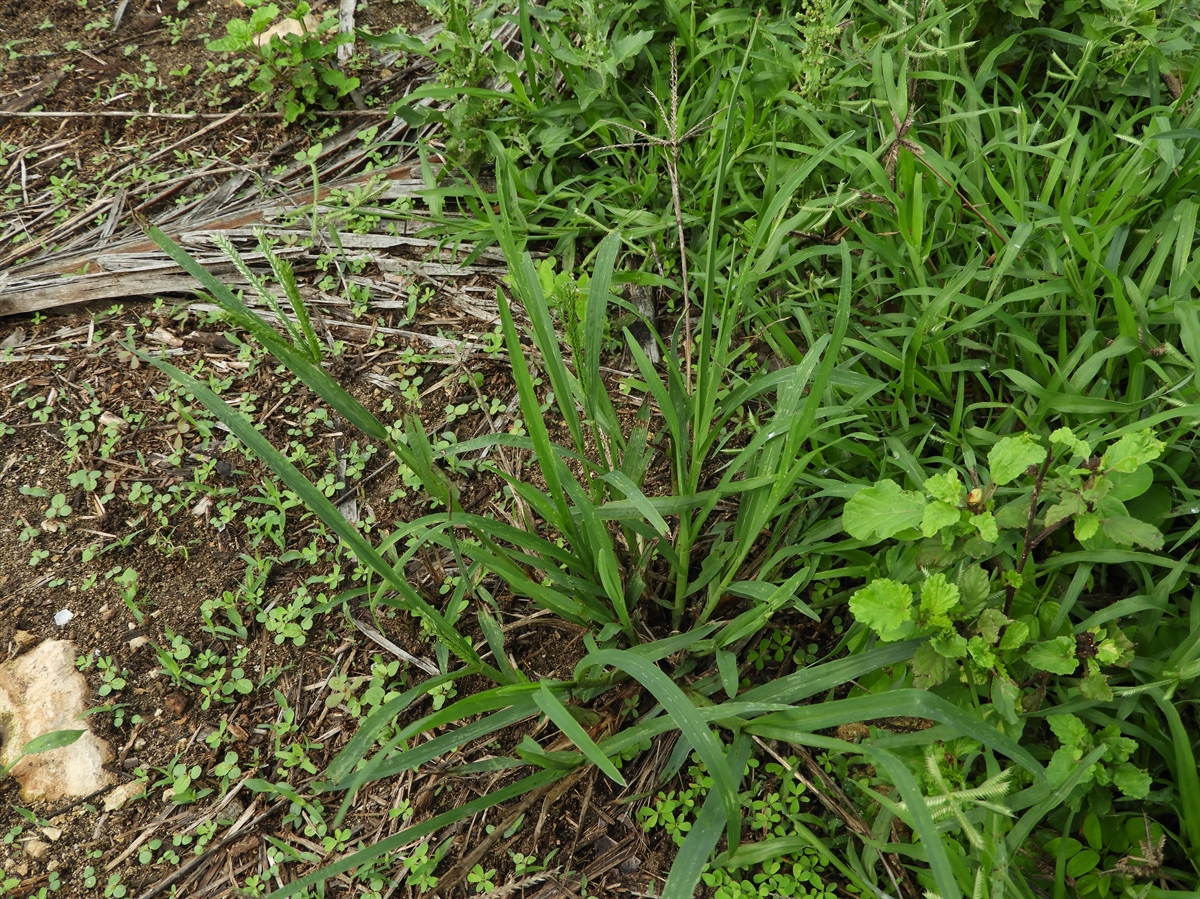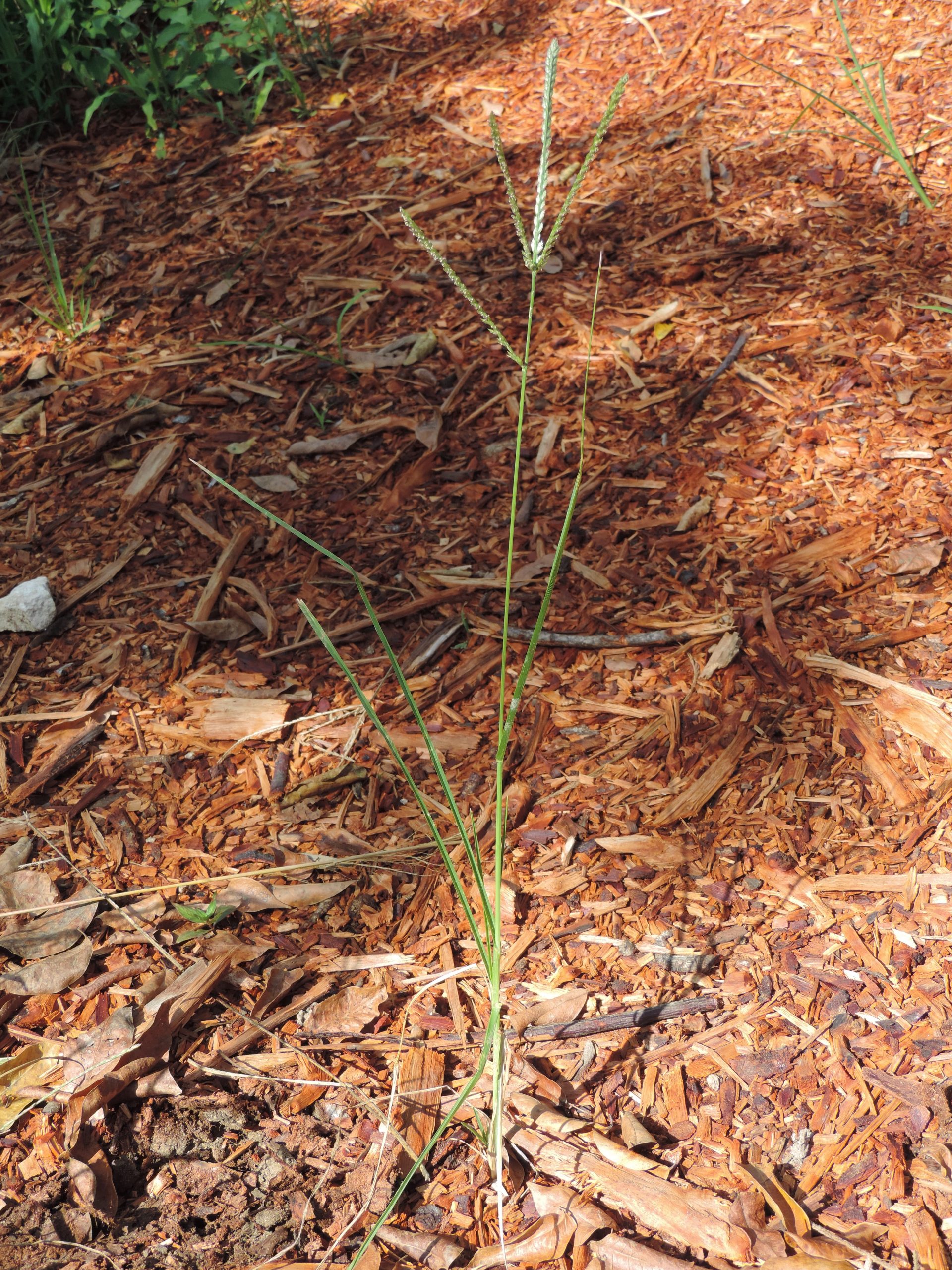Habit: Eleusine indica grows as a caespitose annual or perennial up to 60 cm in height when flowering. The leaves are arranged alternately to 30 cm in length (usually shorter) with at basal sheath extending along the stem that is ciliate along the margin. At the point of divergence of the leaf sheath to the leaf blade is a ciliate ligule. The leaves are parallel veined. Stems and leaves are pubescent.
The zygomorphic flowers are arranged in digitate spikes. At the base of each spikelet are 2 structures called glumes. The first glume small and the second larger and pubescent. In each spikelet there are flowering structures each is subtended by 2 additional structures (lemma and palea). The lemmas are ciliate along their keel. There are 4-7 florets each with 3 stamens and a superior ovary each with a single locule and seed. The fruit is a caryopsis.
Habitat: Eleusine indica grows in Human Altered environments (yard, old fields, roadsides, lawns).
Distribution: Eleusine indica is NOT native to the Lucayan Archipelago. It is native to Africa, the Middle East and parts of Asia and the Indian subcontinent but has spread to North, Central and South America as well as Australia and Europe.
Medicinal/Cultural/Economic usage: Eleusine indica is not known to be used medicinally in the Lucayan Archipelago.




